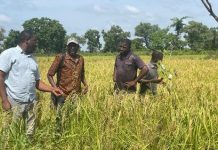In an interview with Foroyaa, which was included in a story on hiking commodity prices in The Gambia, Mr Ousman Bojang, Director of Trade at the Ministry of Trade, Industry, Regional Integration and Employment advised: “The solution to this is we should produce rice in this country because we have the land.’’ He did also indicate that the government is not in a position to subsidise the prices of essential commodities.
It is evident from this that the way forward for The Gambia is to produce more goods for consumption and export. This will minimize imports and maximise exports, and therefore reduce the trade deficit which is colosal for The Gambia.
In short, The Gambia is a country that produces very little and imports almost all her needs. For example, according to the International Merchandise Trade Statistics 2019 published by GBoS the total imports for the second quarter of 2019 stood at 8569 billion dalasis while the total exports amounted to a mere 418 million dalasis. In other words, while imports constituted 95.4 percent of the total trade while total exports constitute just 4.6 percent. It is evident that this is unsustainable.
Rice production is part of this huge import bill as evident in this same publication, which reveals that import of rice amounted to 473 million dalasis when there is land to produce rice to feed our population. Other high import bills include cane sugar amounting 647 million dalasis and vegetable oil amounting to 473 million dalasis.
The electorate have a lot of questions to ask presidential candidates just how they are going to lift The Gambia from producing virtually nothing to importing nearly all our needs, including the food we eat (rice, sugar, oil, tomato paste, etc.)



















